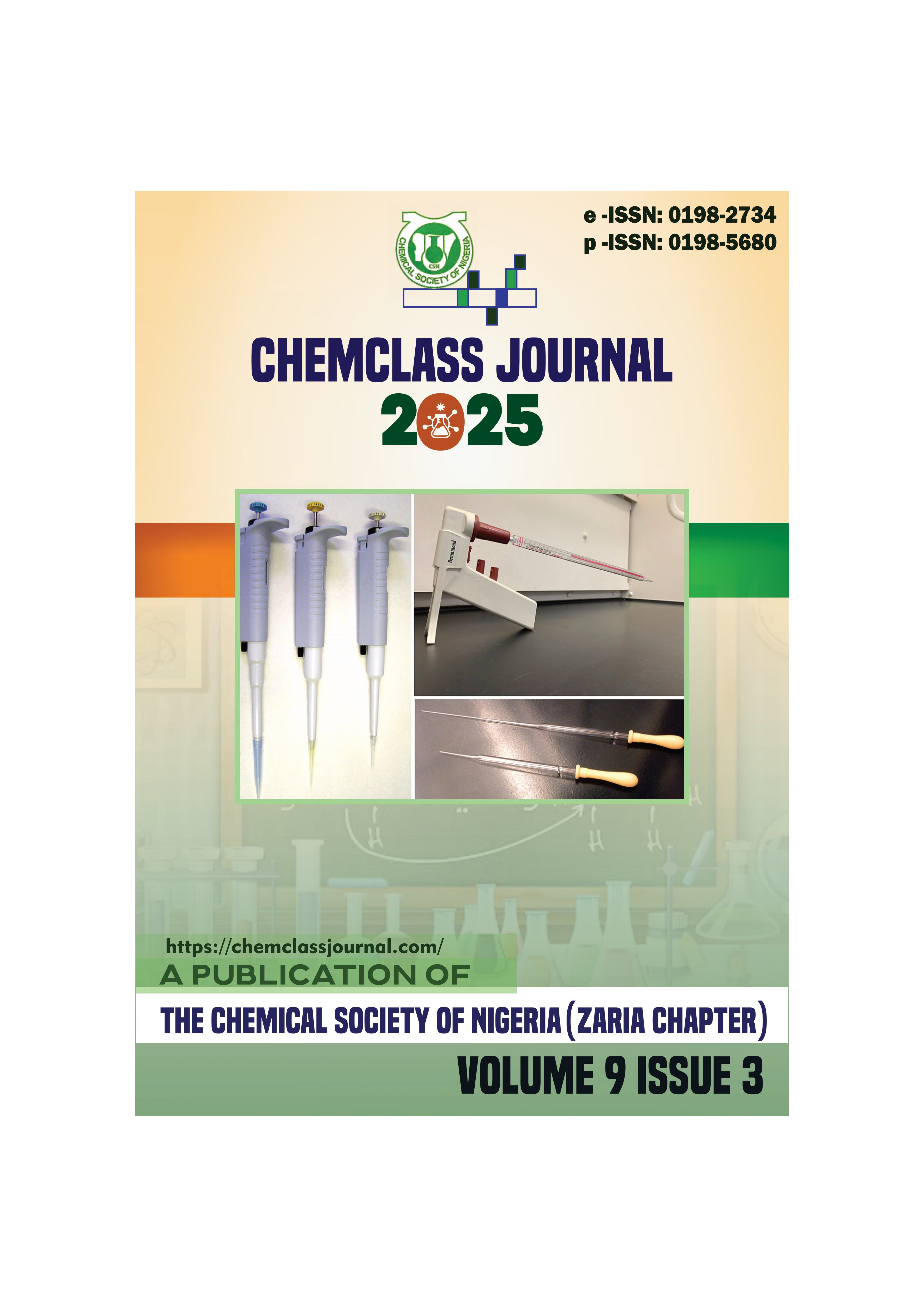Synthesis, Characterization and Antibacterial properties of Cr(II), Co(II), Ni(II) and Cu(II) Schiff Base Complexes Derived from 1,3-diphenylpropane-1,3-dione and Glycine
DOI:
https://doi.org/10.33003/chemclass-2025-0903/13Keywords:
Schiff Base, Transition metals , Antibacterial activity., Complexes, 1,3-diphenylpropane-1,3-dioneAbstract
The Schiff base ligand, 1,3-diphenylpropane-1,3-diylidenebis(azanylylidene)diacetic acid, derived from the condensation of 1,3-diphenylpropane-1,3-dione with glycine, was synthesized and complexed with Cr(II), Co(II), Ni(II), and Cu(II) ions. The ligand and its complexes were characterized by FT-IR, elemental analysis, molar conductance, and magnetic susceptibility studies, alongside physical and thermal measurements. Spectral analyses confirmed coordination via azomethine nitrogen, with metal-dependent involvement of carbonyl/enolate oxygen atoms. Physical data revealed color variations, enhanced decomposition temperatures, and greater solubility of the complexes in organic solvents relative to the free ligand. Molar conductance values indicated non-electrolytic, mononuclear complexes of general formula [M(L)]Cl₂, while magnetic moments supported paramagnetic configurations consistent with octahedral geometries. Antibacterial screening against Streptococcus pneumoniae (Gram-positive) and Escherichia coli (Gram-negative) by the agar cup-plate method showed modest activity for the free ligand but significantly improved effects for the complexes. Notably, [Ni(L)]Cl₂ and [Co(L)]Cl₂ exhibited inhibition zones of 20 mm and 19 mm, respectively, against E. coli. The enhanced activity is attributed to chelation, which increases lipophilicity and facilitates penetration into microbial membranes. These results highlight the role of metal identity in structural and biological properties, with Ni(II) and Co(II) complexes showing promise as antibacterial agents





 ChemClass Journal
ChemClass Journal
